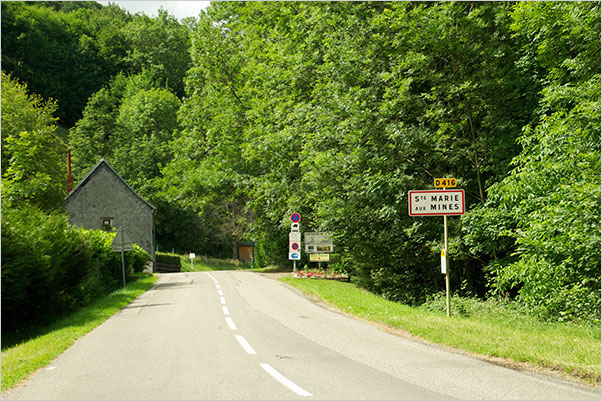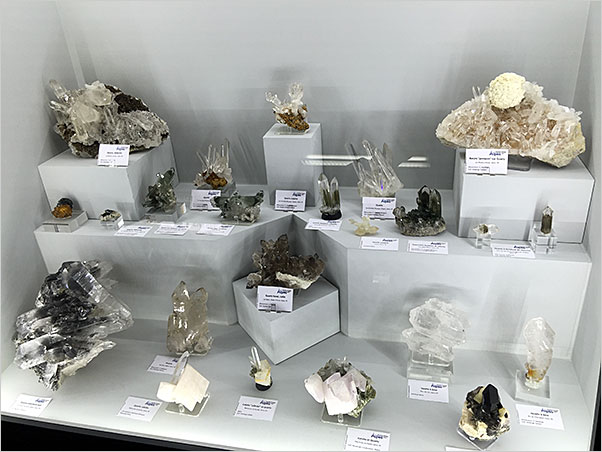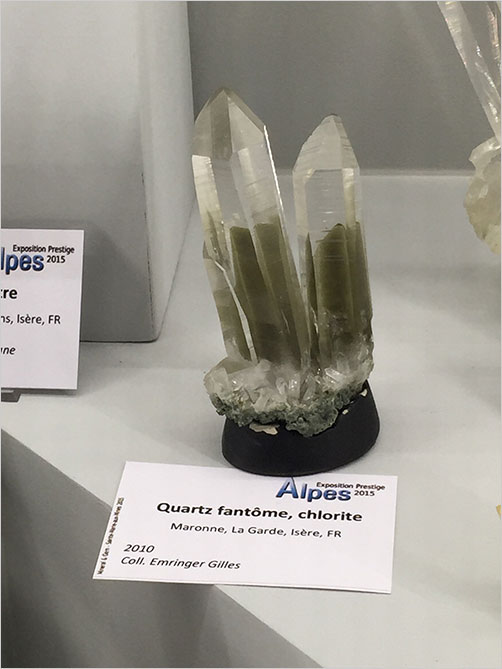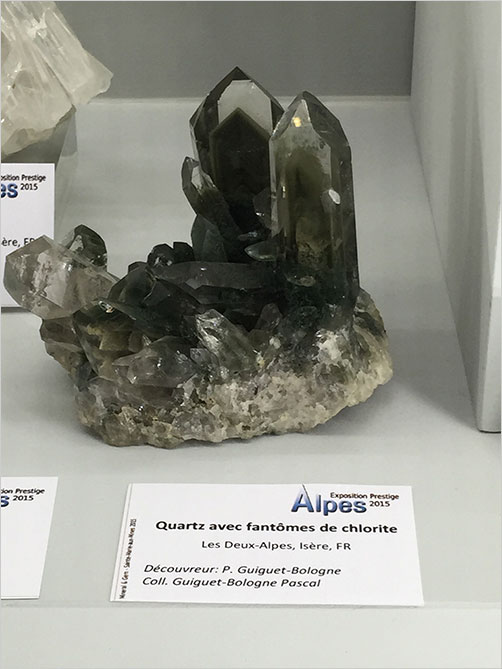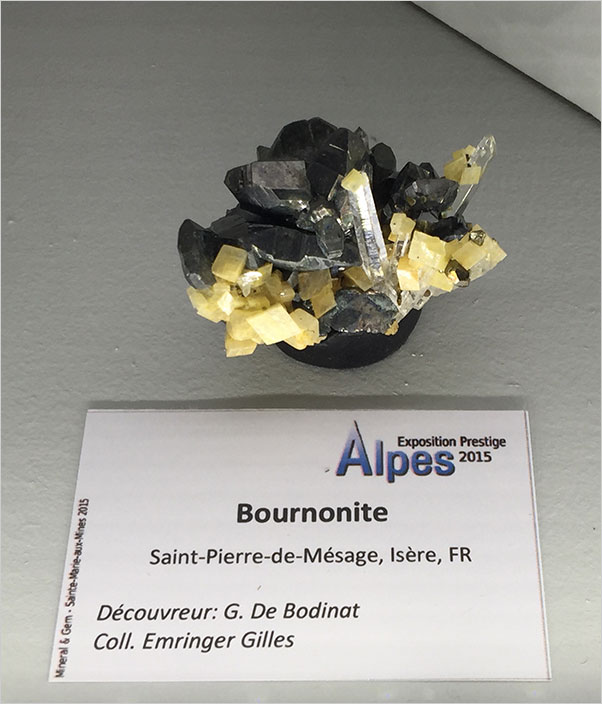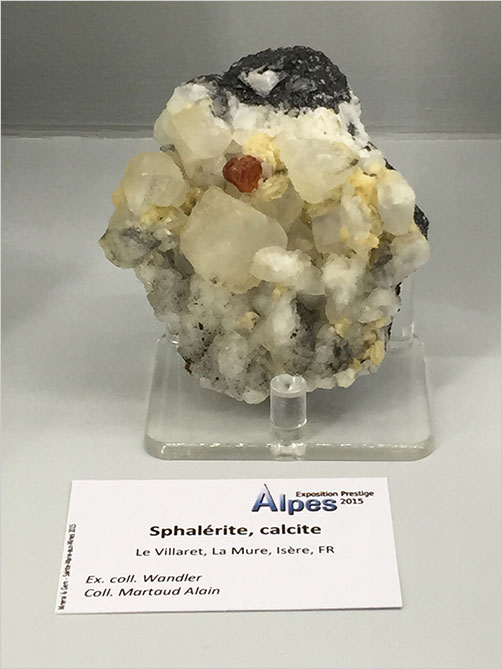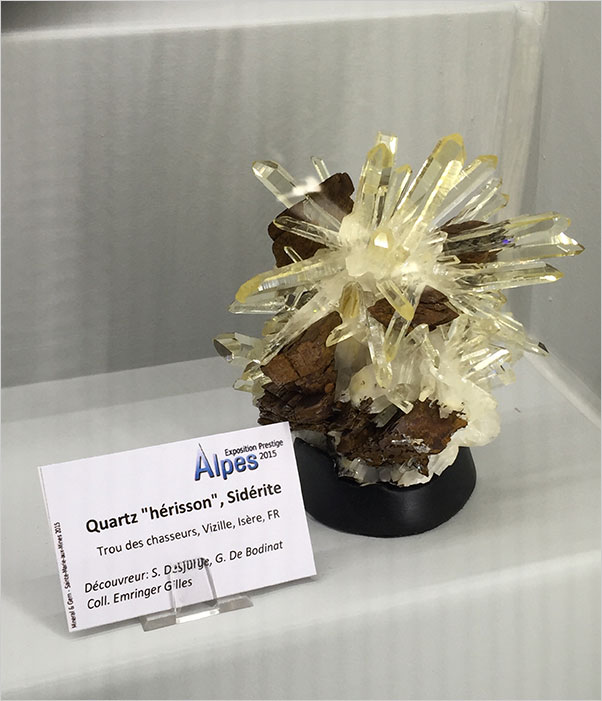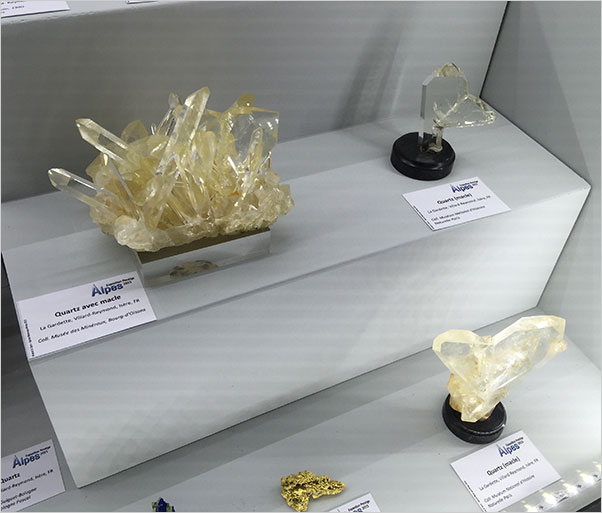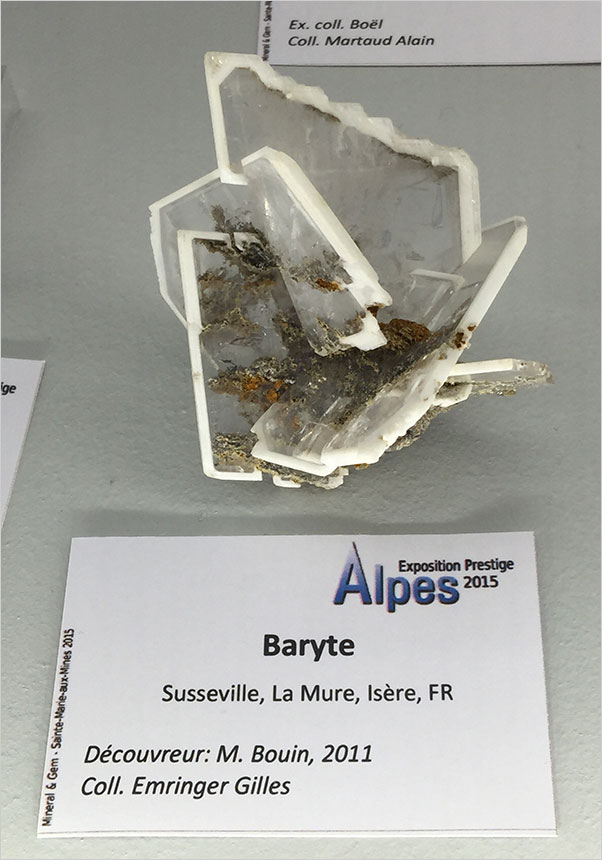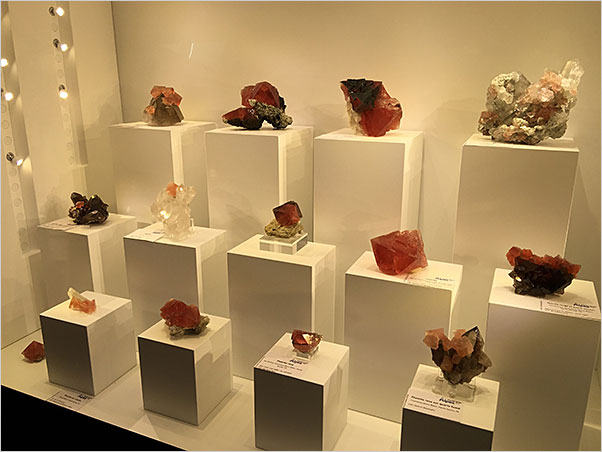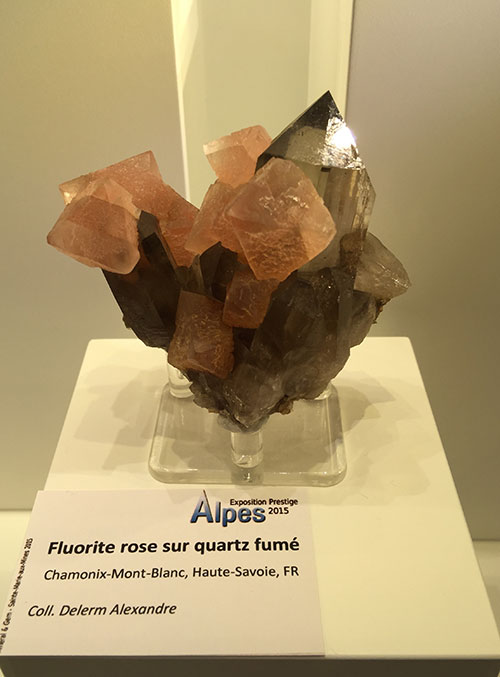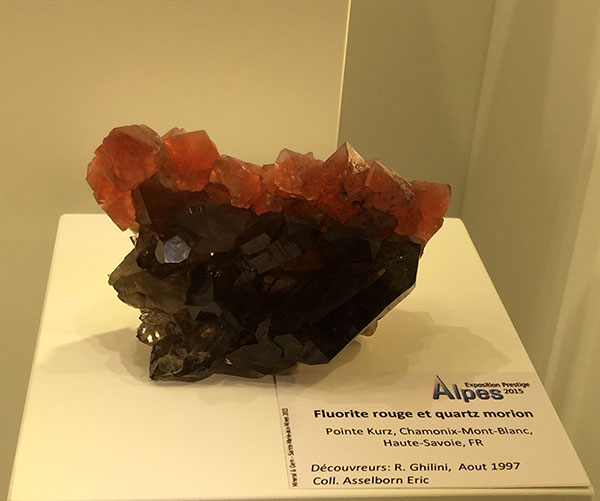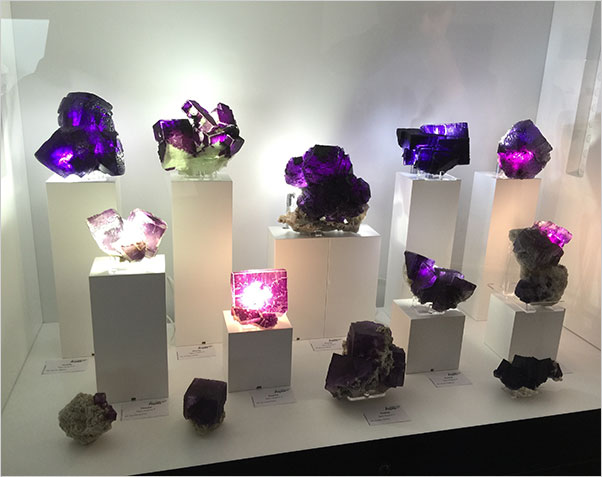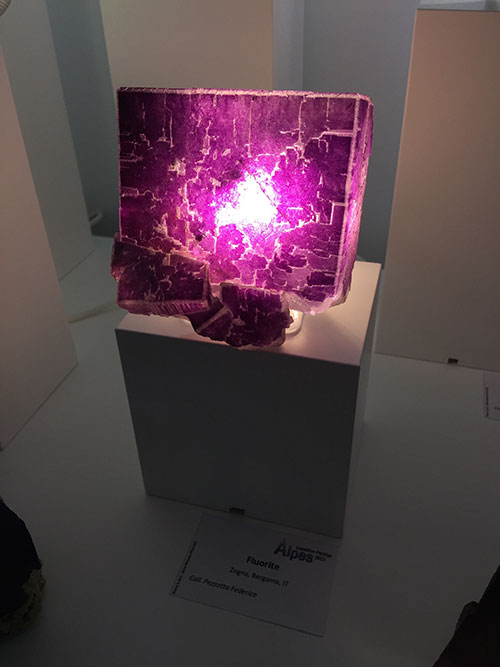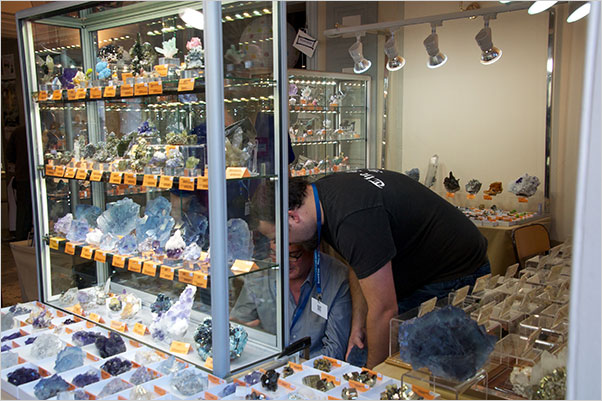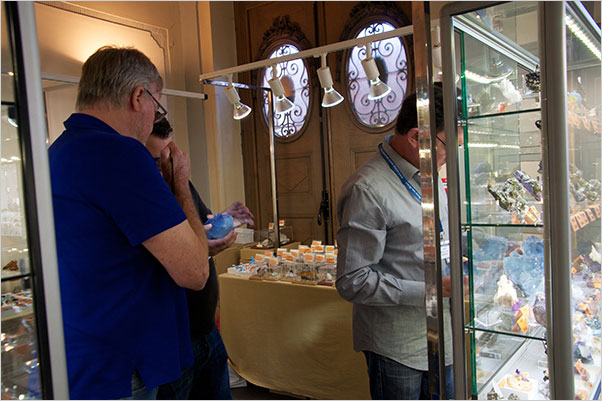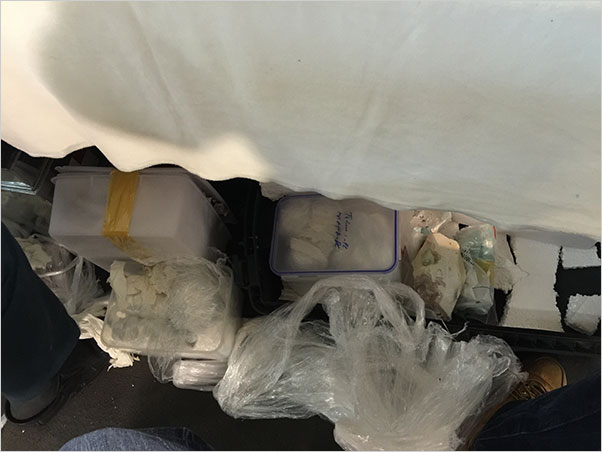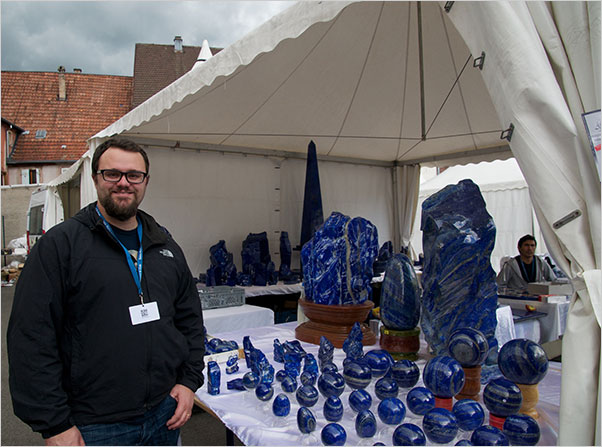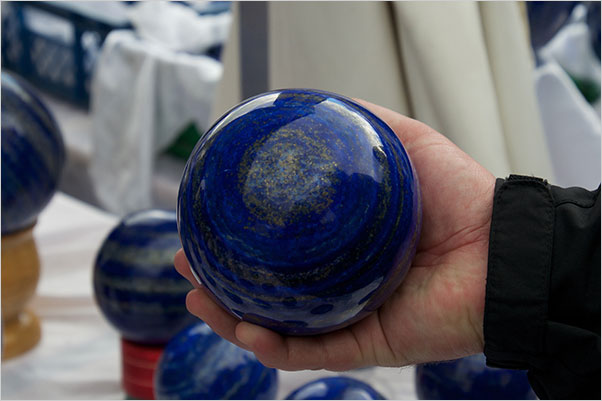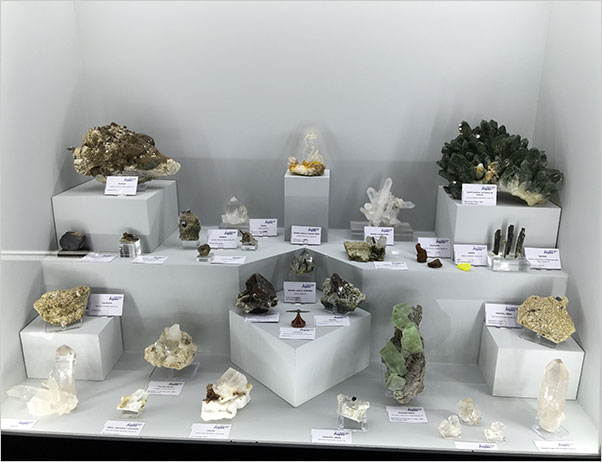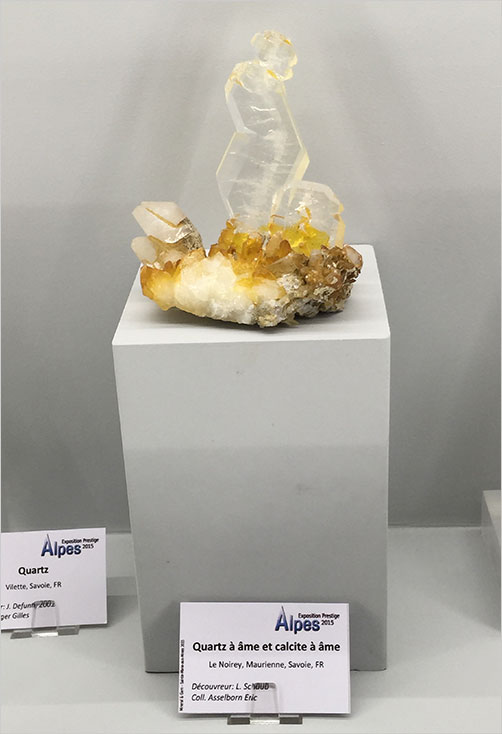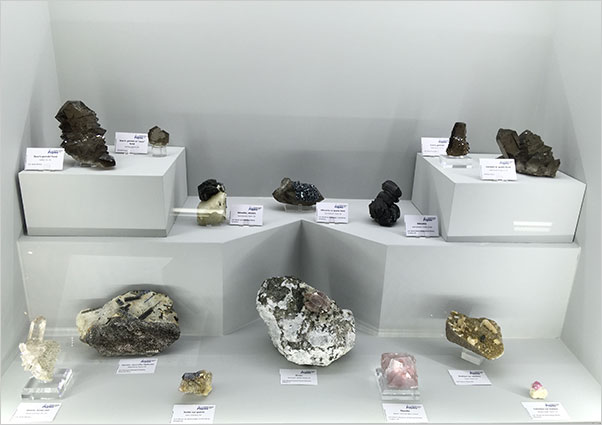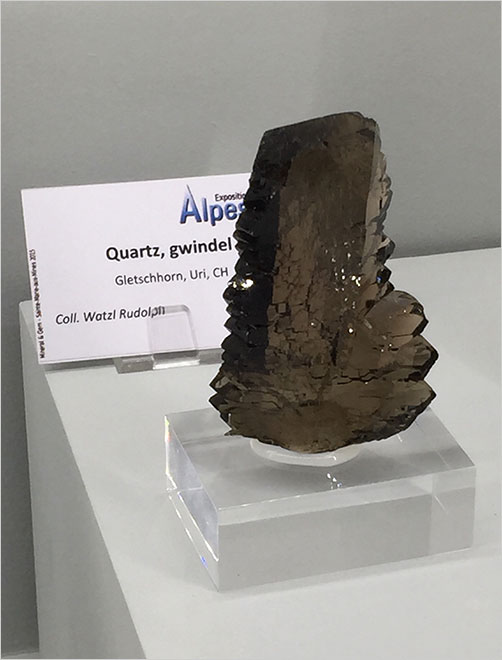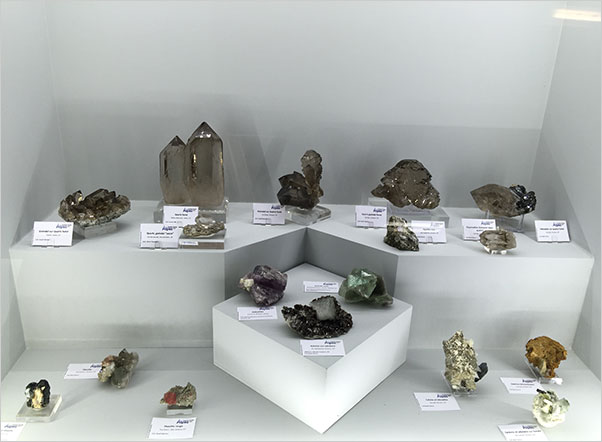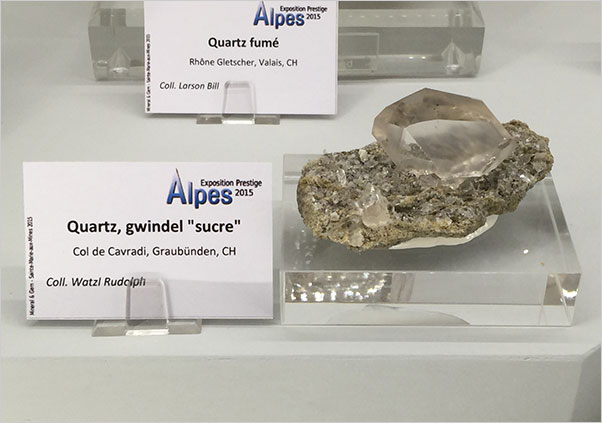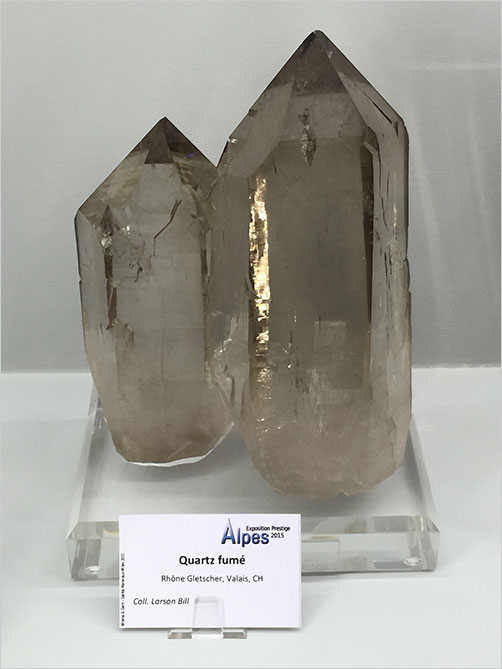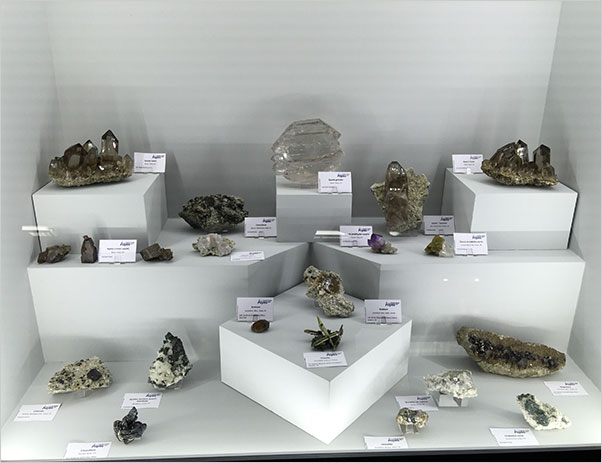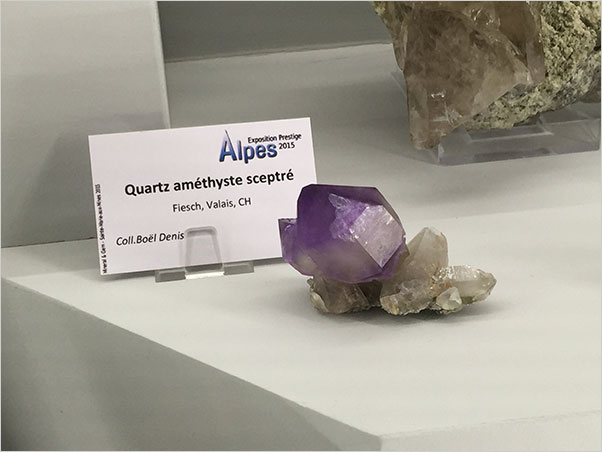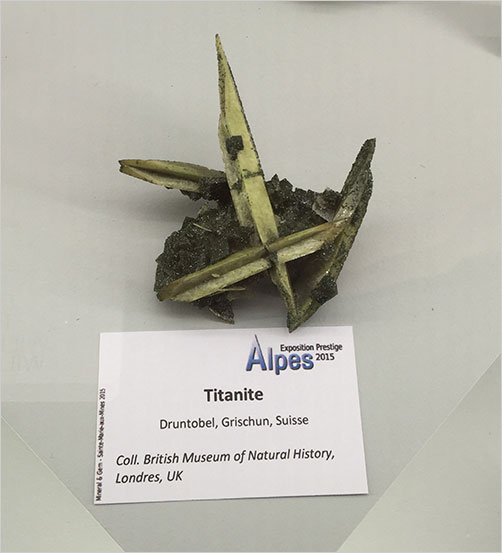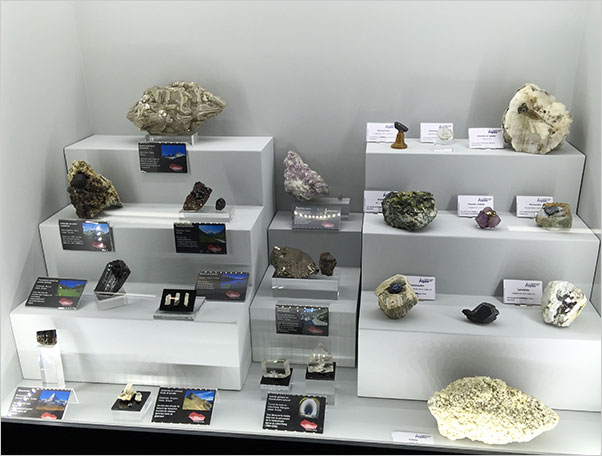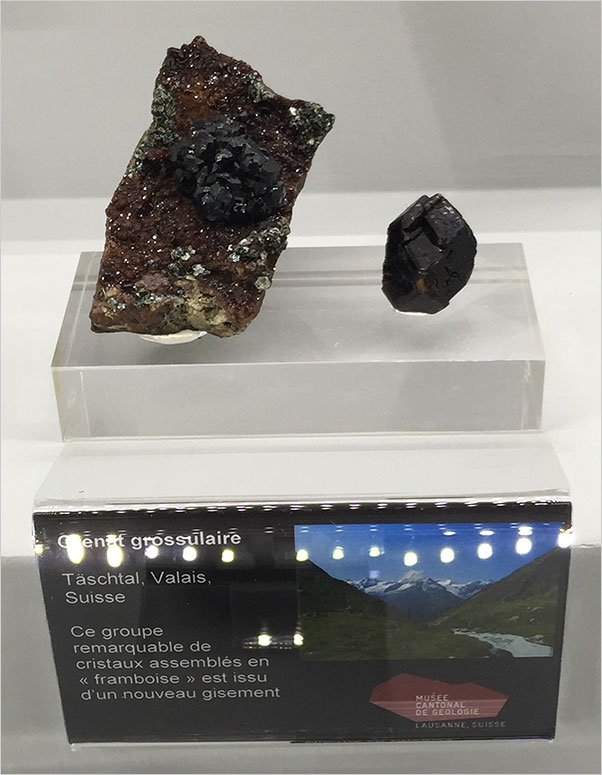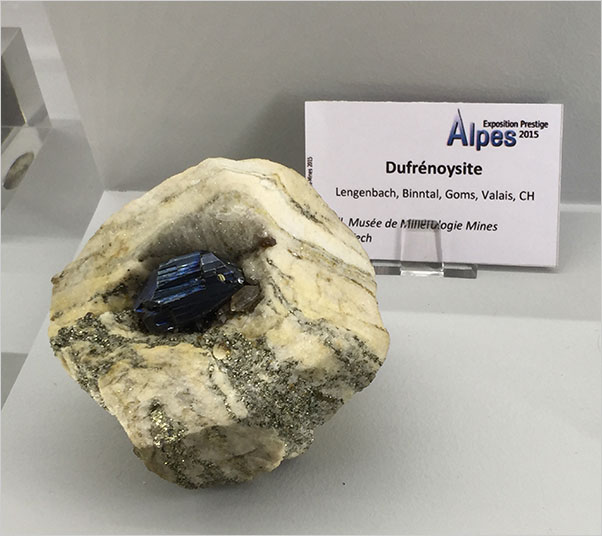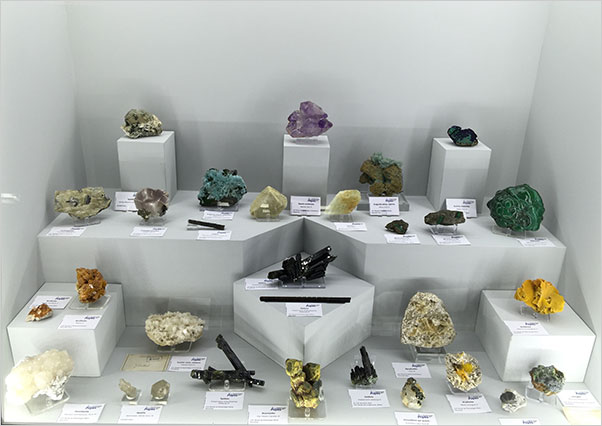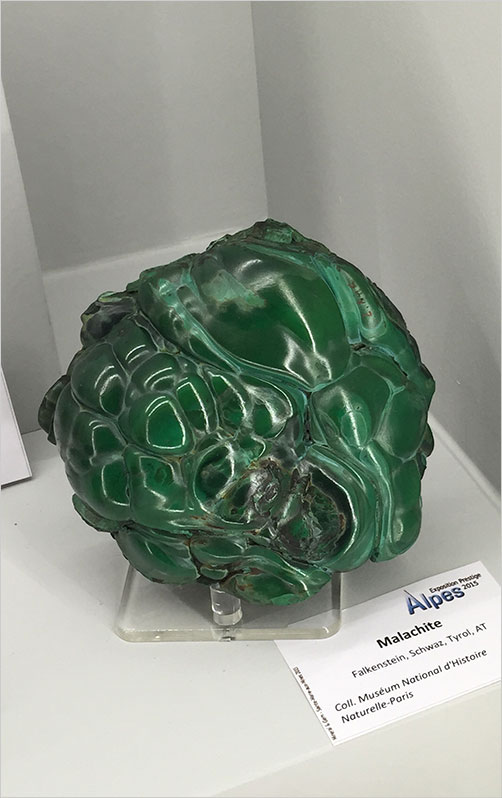Reflections on the Sainte-Marie Show, 2015
By Will Larson, Pala International
Pala International’s Will Larson shares some of the highlights of the 2015 show whereby an Alsatian mountain township becomes an international playground for mineral enthusiasts.
The Sainte-Marie-aux-Mines mineral show is one of the highlights of my year as a mineral enthusiast—mostly because the town is located in such a charming area, not because it has the most minerals on display, although this year it did feature a fantastic display of alpine minerals. Every year I look forward to late June to visit the show and this year was no different—well, a little different as I was accompanied by my lovely wife Rika, along with my mother and father on this adventure.
This year the show was probably the most organized it has ever been. There were very few times traffic was an issue. In past years, the traffic coming into the town was lined up for at least one hour, but no more! Mayor Claude Abel and the show organizers have done an amazing job: by reducing the bottleneck by adding buses and off-site parking, by improving the layout of the booths, and even expanding some areas to integrate more dealers and special exhibits into the show.
Tuesday was our first day at the show and we found quite a few goodies but it was a little too early, as many of the dealers were not yet fully set up. We visited our favorite lunch spot, The Miners Café, and had their fantastic jambon, a pork dish I’ve only found in this region of France where the meat falls right off the bone! After lunch, Christiano Ferraris, of the Muséum national d’Histoire naturelle in Paris, let us preview the Alpine special exhibit since we had loaned a few special pieces for display. The exhibit showcased some of the most fantastic minerals from the Alps I’ve seen! Two fluorite cases were beyond words.
The second day was a very busy day as we went from meeting to meeting to meeting. We purchased the majority of the amazing specimens we obtained at Sainte-Marie that day. One of the many nice reasons to go to Sainte-Marie is you see a wealth of old European classics which you just don’t see in America. The Europeans themselves treasure them highly (presumably more highly than we do!) but we always find a few. One of my favorite specimens I purchased was brought to me, a goethite from Spain that is the featured mineral specimen this month: a fantastic piece! We were also able to buy some fine aquamarine specimens and tourmaline specimens from Pakistan. Buying minerals can be very interesting…out of a suitcase or under a table!
That night we had an unscheduled side trip. Many of you may have already heard but if you haven’t, my mother Jeanne, had not been feeling well all day and thanks to the kindness of Ian Bruce and his wife Diana, she was able to rest in a cozy chair in their booth. When we returned home, she opted to skip our dinner and my father stayed with her. When we returned she was in excruciating pain. My father was about to call us when we opened the door. After some Googleing and a few phone calls to our close French friends we located the closest emergency room. After an hour of driving on windy, narrow mountain roads, we made it to the ER in Colmar and checked my mother in. She was feeling a little better on the car ride down but when we arrived the pain level returned. We waited in the lobby but didn’t hear anything for several hours. Around 4 a.m. they told us that she indeed had multiple gallstones, which are super painful to pass. They did blood tests, x-ray and CT scans, plus gave her an IV of pain medication and fluids. We left the hospital in the dark but watched the sunrise as we approached our flat. By 6 a.m. we were back in our rooms more than a bit exhausted.
Showing up at the show on the Thursday afternoon after getting some rest was pretty much useless. I wasn’t able to concentrate or focus on the minerals I was shown, yet we were able to network well for the following day. The highlight of the afternoon was our visit to a nearby hotel to view a collection where we did get a special garnet specimen. After this we headed home early for some rest and recovery.
Friday was the busiest day of the show with many of the local French people coming to see the show over the weekend. For us, the business part was pretty much over, we thought, and yet we did come upon one of our favorite finds of the show: a beautiful crystallized gold specimen from Australia. This was a little more exciting than the day before. Patrick Dreher and his wife, Pia, arrived at the show. Since it was Pia’s first time at Sainte-Marie, we got more energized as we were able to share the show with her, and then the gold specimen with my mother when we returned to the flat.
Saturday was a busy day with the Drehers, plus packing and arranging shipments. We consigned a few pieces we brought with us that had not been exchanged. Jeanne was feeling much better with the medication, so she was able to enjoy the show all Saturday and was able to join us for dinner with Raquel Alonso Perez of Harvard and Alan Hart of the British Museum, who were our guests. My mom was careful with her selection for dinner this night. Sadly for her: No foie gras!
On Sunday, we drove to Idar-Oberstein for some fun gem business and to talk with Gerd Dreher and Patrick about a possible book on their art. We met the publishers and had a special spiessbraten [pork tenderloin] together. Patrick arranged various visits to many dealers. A highlight was to visit Bernd and Tom Munsteiner’s great studio. My father and Bernd have been friends for decades but it was my dad’s first visit and the Munsteiners made it very special. I was able to purchase a prototype carving that may have a good future when made as earring pairs. We finished our day with a visit to a local church. The windows—created by the Munsteiners—are made from carved squares and triangular polished plates of agate with specific colors and patterns, laid in sequences to create larger patterns, symbols and stories.
Wednesday was another full day of visiting dealers; Patrick arranged an outside table at his favorite Italian restaurant with several mutual friends to celebrate Rika’s birthday in style. Rika enjoyed a great birthday made more special by Patrick who had a special surprise. He had carved a baby rabbit out of smoky quartz for her. Just two days before she had asked if one day we could have a Dreher rabbit carved. I had planned with Patrick in late March for him to do a carving of a baby rabbit and to inscribe her name on the bottom as it takes a very long time to finish such a beautiful carving. It was definitely a birthday to remember!
I’ll leave you with some more of the dozens of images I took of the special Alps exhibition…
See these reports from other years
